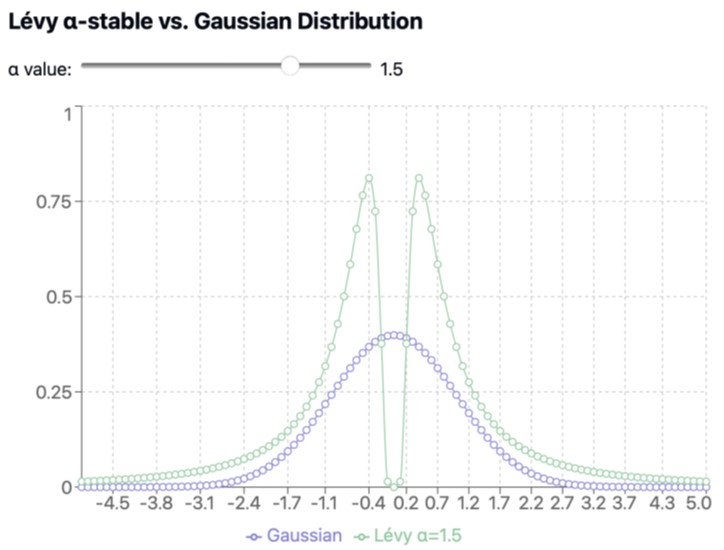Multidimensional and Nonlinear Fractional Langevin Equations: Advancing the Theory in of Anomalous Diffusion
Abstract
This paper presents a comprehensive theoretical analysis of fractional Langevin equations (FLEs) and their applications in modeling anomalous diffusion processes. We extend the classical FLE framework in several significant directions to address the complexities observed in various physical, biological, and social systems. First, we derive a multidimensional extension of the FLE, providing a robust tool for studying anomalous diffusion in higher-dimensional spaces. Second, we incorporate non-Gaussian Lévy α-stable noise into the FLE, enabling the description of systems characterized by heavy-tailed distributions and extreme events. Third, we develop a nonlinear variant of the FLE to model more intricate restoring forces and potential landscapes. Finally, we analyze a generalized FLE with different orders of fractional derivatives for the inertial and friction terms, offering a flexible framework capable of capturing a wider range of anomalous diffusion phenomena.
For each extension, we prove the existence and uniqueness of solutions, derive the corresponding probability distributions, and analyze the scaling behavior of the mean squared displacement in the long-time limit. Our results demonstrate how these generalized FLEs can describe various regimes of anomalous diffusion, from subdiffusive to superdiffusive behavior. This work provides a unified theoretical foundation for understanding and modeling complex diffusive processes across diverse disciplines, paving the way for more accurate descriptions of systems exhibiting memory effects, non-Gaussian statistics, and multiscale dynamics.
References
[2] Lutz, E. (2001). Fractional langevin equation. Physical Review E, 64(5), p. 051106. https://doi.org/10.1103/PhysRevE.64.051106
[3] Metzler, R., & Klafter, J. (2000). Boundary value problems for fractional diffusion equations. Physica A: Statistical Mechanics and its Applications, 278(1-2), 107-125. https://doi.org/10.1016/S0378-4371(99)00503-8
[4] Eab, C., & Lim, S. (2011). Fractional langevin equations of distributed order. Physical Review E, 83(3), p. 031136. https://doi.org/10.1103/PhysRevE.83.031136
[5] Weiss, M., Elsner, M., Kartberg, F., & Nilsson, T. (2004). Anomalous subdiffusion is a measure for cytoplasmic crowding in living cells. Biophysical Journal, 87(5), 3518-3524. https://doi.org/10.1529/biophysj.104.044263
[6] H¨ofling, F., & Franosch, T. (2013). Anomalous transport in the crowded world of biological cells. Reports on Progress in Physics, 76(4), p. 046602. https://doi.org/10.1088/0034-4885/76/4/046602
[7] Lutz, E. (2001). Fractional langevin equation. Physical Review E, 64(5), p. 051106. https://doi.org/10.1103/PhysRevE.64.051106
[8] Metzler, R., & Klafter, J. (2000). Boundary value problems for fractional diffusion equations. Physica A: Statistical Mechanics and its Applications, 278(1-2), 107-125. https://doi.org/10.1016/S0378-4371(99)00503-8
[9] Eab, C., & Lim, S. (2011). Fractional langevin equations of distributed order. Physical Review E—Statistical, Nonlinear, and Soft Matter Physics, 83(3), p. 031136. https://doi.org/10.1103/PhysRevE.83.031136
[10] Sandev, T., Metzler, R., & Tomovski, Z. (2011). Fractional diffusion equation with a generalized riemann–liouville time fractional derivative. Journal of Physics A: Mathematical and Theoretical, 44(25), p. 255203. https://doi.org/10.1088/1751-8113/44/25/255203
[11] Bouchaud, J. P., & Georges, A. (1990). Anomalous diffusion in disordered media: statistical mechanisms, models and physical applications. Physics reports, 195(4-5), 127-293. https://doi.org/10.1016/0370-1573(90)90099-N
[12] Metzler, R., & Klafter, J. (2000). The random walk’s guide to anomalous diffusion: a fractional dynamics approach. Physics reports, 339(1), 1-77. https://doi.org/10.1016/S0370-1573(00)00070-3
[13] H"ö" fling, F., & Franosch, T. (2013). Anomalous transport in the crowded world of biological cells. Reports on Progress in Physics, 76(4), p. 046602. https://doi.org/10.1088/0034-4885/76/4/046602
[14] Weiss, M., Elsner, M., Kartberg, F., & Nilsson, T. (2004). Anomalous subdiffusion is a measure for cytoplasmic crowding in living cells. Biophysical Journal, 87(5), 3518-3524. https://doi.org/10.1529/biophysj.104.044263
[15] Croitoru, F. A., Hondru, V., Ionescu, R. T., & Shah, M. (2023). Diffusion models in vision: A survey. IEEE Transactions on Pattern Analysis and Machine Intelligence, 45(9), 10850-10869. https://doi.org/10.1109/TPAMI.2023.3261988
[16] Kobelev, V., & Romanov, E. (2000). Fractional langevin equation to describe anomalous diffusion. Progress of Theoretical Physics Supplement, 139, 470-476. https://doi.org/10.1143/PTPS.139.470


This work is licensed under a Creative Commons Attribution 4.0 International License.
Copyright for this article is retained by the author(s), with first publication rights granted to the journal.
This is an open-access article distributed under the terms and conditions of the Creative Commons Attribution license (http://creativecommons.org/licenses/by/4.0/).








1.png)














